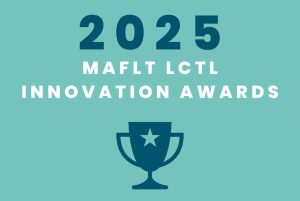Introduction
Diverse Russian: A Multicultural Exploration is a free, online, interactive Open Educational Resource (OER) that invites you to use the Russian language to learn about the diversity of people who speak Russian and the fascinating variety of places and cultures in the world that include Russian-speaking communities. While using this book, you will engage with these places and cultures, increase your intercultural competence, and experience a multiplicity of viewpoints, all while improving your Russian language skills.
The presence of the Russian language in many regions has complex historical roots, including colonization, conquest, and the suppression of local languages and cultures. Diverse Russian is rooted in an awareness of these histories and aims to reflect critically on them, rather than to celebrate or ignore them.
The purpose of this textbook is to present Russian as it exists today—a language spoken by many people from diverse backgrounds, who use it in ways that reflect their unique cultural identities and lived experiences. We aim to bring visibility to voices within and outside of Russia, emphasizing that Russian is not solely the language of ethnic Russians or the state, but also of individuals who negotiate and reshape it according to their own perspectives.
This approach allows students to encounter Russian as a dynamic language that encompasses stories of resilience, adaptation, and self-expression. We believe this broadens their understanding of both Russian and the historical forces behind its spread, as well as the diverse identities of people who use it today.
Navigating this book
To navigate this book, you can either use the “Previous” and “Next” buttons that you can find in red at the very bottom of the page, or you can click “Contents” on the upper left side of the page. This will open the Table of Contents, which will allow you to jump around from page to page in the book. Click the plus signs to see more detail, and click “Contents” again if you’d like to close it. Note that the Chrome browser works the best with these materials, and the Safari browser has problems on occasion.
If you are a student, and this is your first time visiting this book, please start with the For students page.
If you are a teacher, and this is your first time visiting this book, please start with the For teachers page.
Or go directly to one of the chapters:
Урок 6: Соединённые Штаты Америки
About the Authors
Shannon Donnally Quinn is Associate Professor of Russian at Michigan State University. She received her Ph.D in Slavic Languages and Literature at the University of Wisconsin-Madison. Her ongoing teaching and research interests include instructional technology in language teaching, blended learning, and curricular design, and she completed a second Master’s degree in Instructional Design in 2015. Shannon is the Editor-in-Chief of The FLTMAG, an online journal about language learning and technology, and also works on the RAILS Project (Russian Advanced Interactive Listening Series).
Anna Tumarkin is a Teaching Professor at the University of Wisconsin-Madison, where she directs the Russian Language Program and serves as Associate Director of the Russian Flagship Program. She holds a Ph.D. in Slavic Languages and Literature from UW-Madison. Her teaching and research interests encompass language teaching methodology, instructional technology, and Russian and Ukrainian literature and culture. Anna teaches Russian at all levels and has extensive experience in curriculum design and development.
Endorsement
“Diverse Russian: A Multicultural Exploration offers both learners and instructors of Russian unprecedented access to the variety and diversity of Russian-speaking communities on three continents. From the Russian Far East to Georgia, from Ukraine to Brighton Beach, these interactive online material immerse its users in the rich translingual and intercultural environments, drawing on an impressive variety of authentic texts, images, and sounds. The authors are to be commended for this innovative project and for a large step toward a more inclusive pedagogy of Russian language and culture.”
-Thomas Jesús Garza, University of Texas at Austin
MAFLT LCTL Innovation Awards
We are honored that our OER received the 2025 MAFLT LCTL Innovation Award. Read more in this profile about the book from Michigan State University’s College of Arts & Letters.


